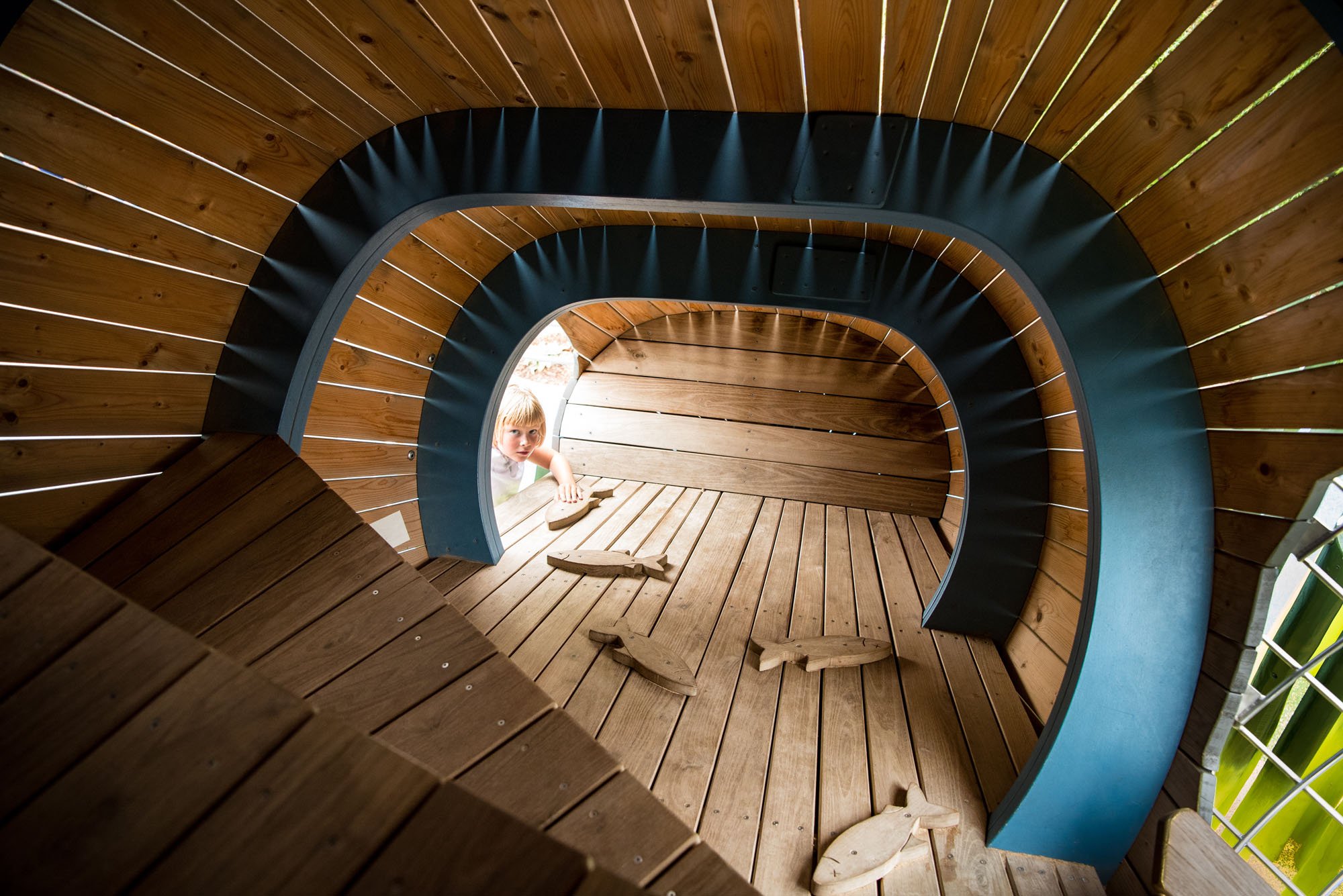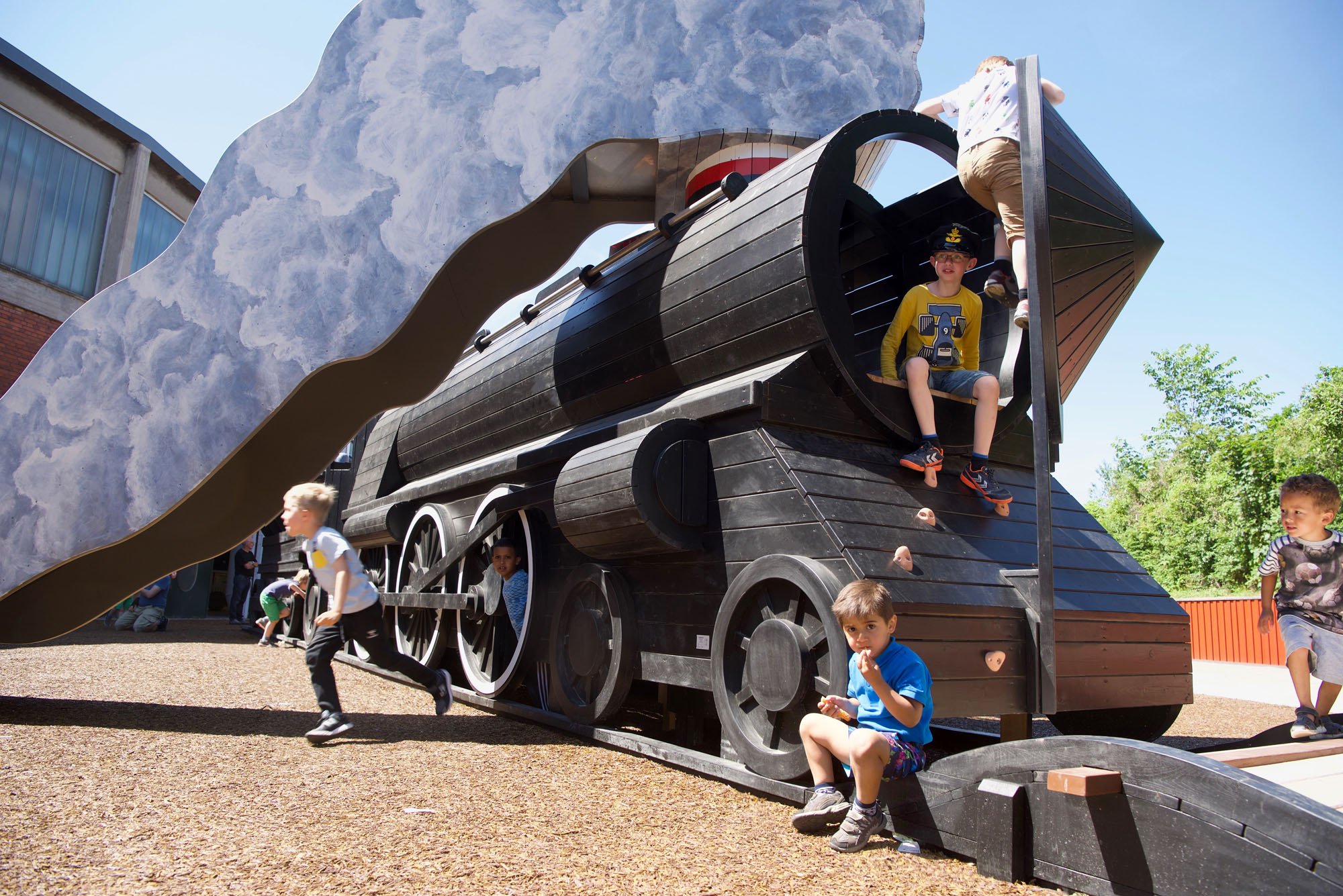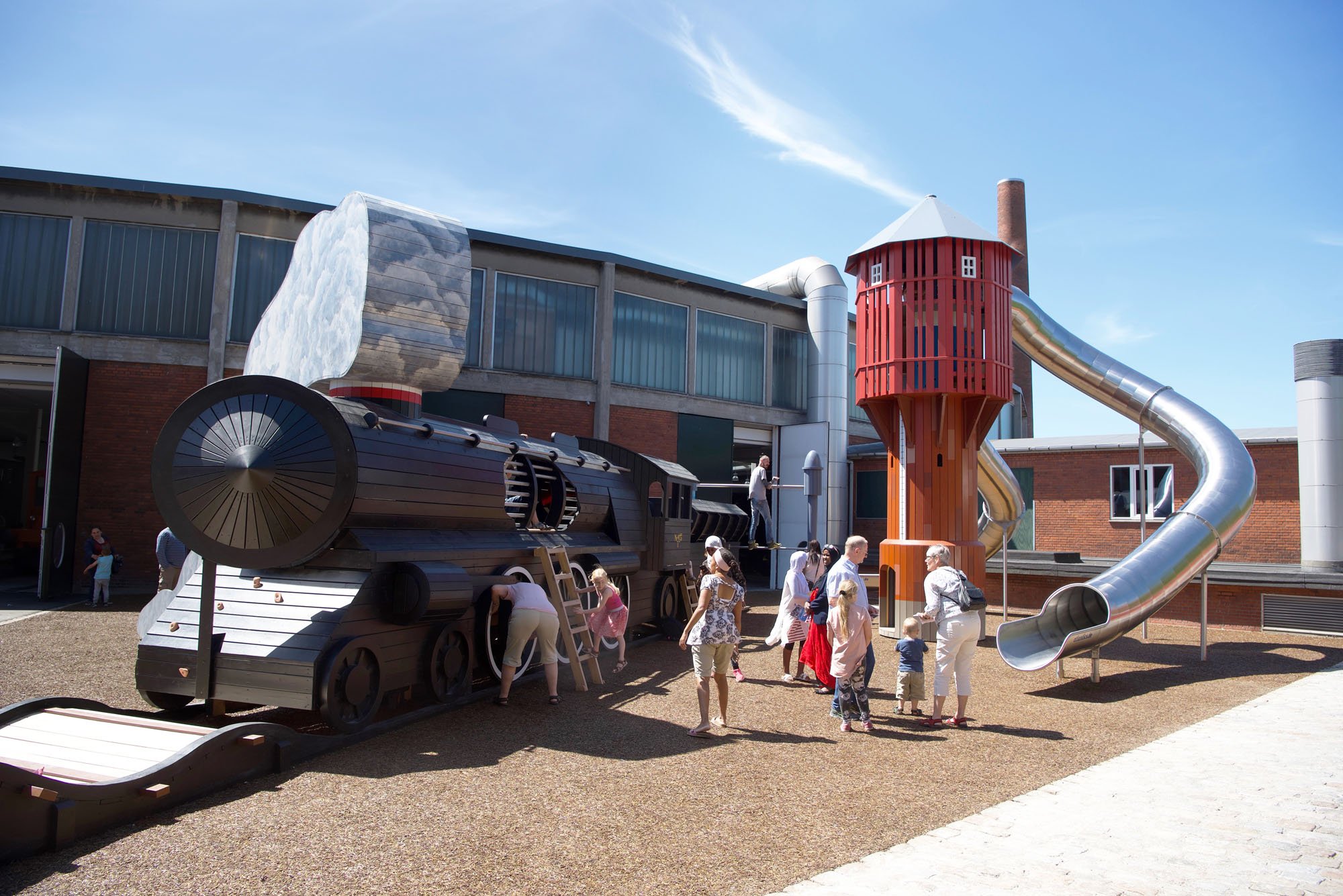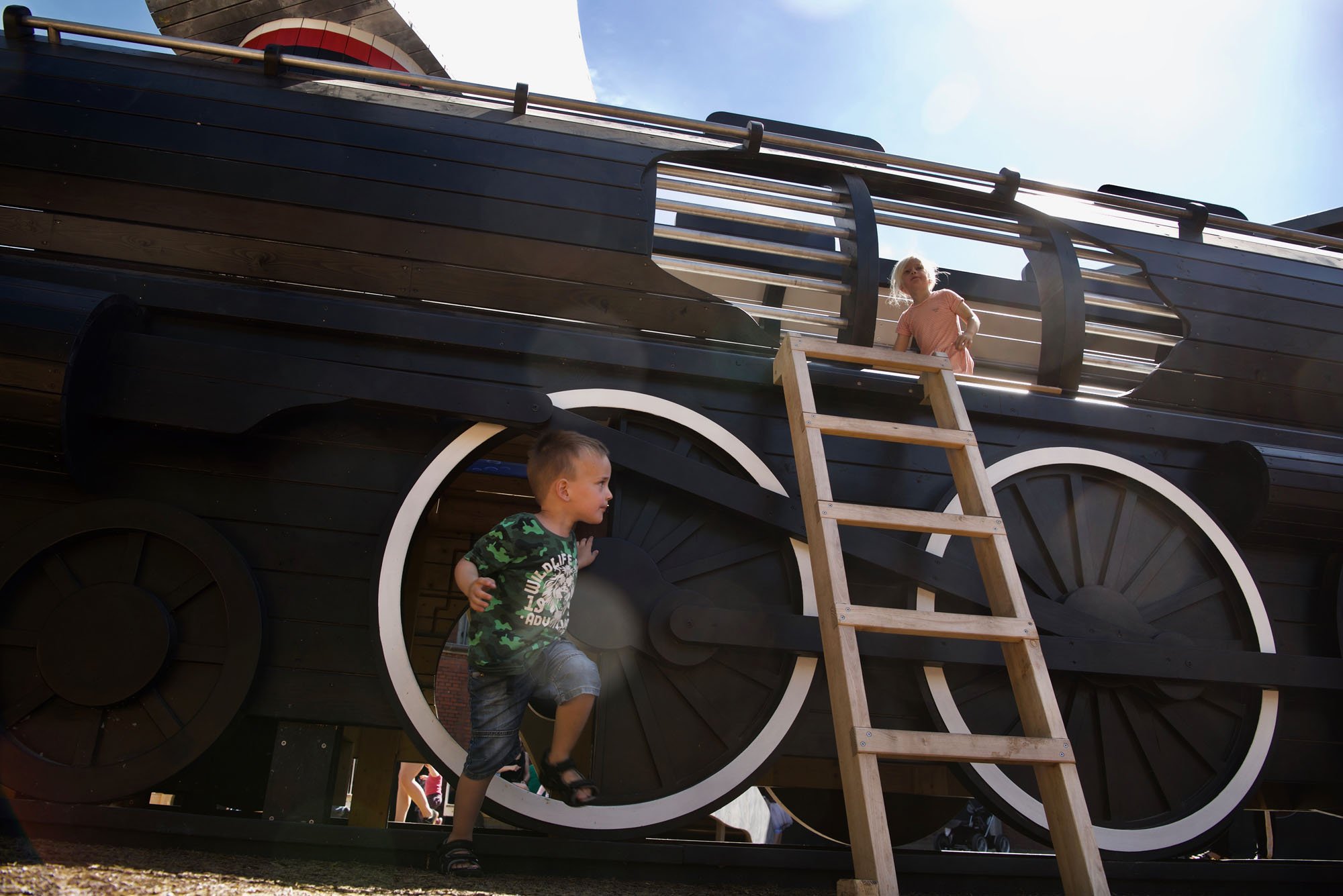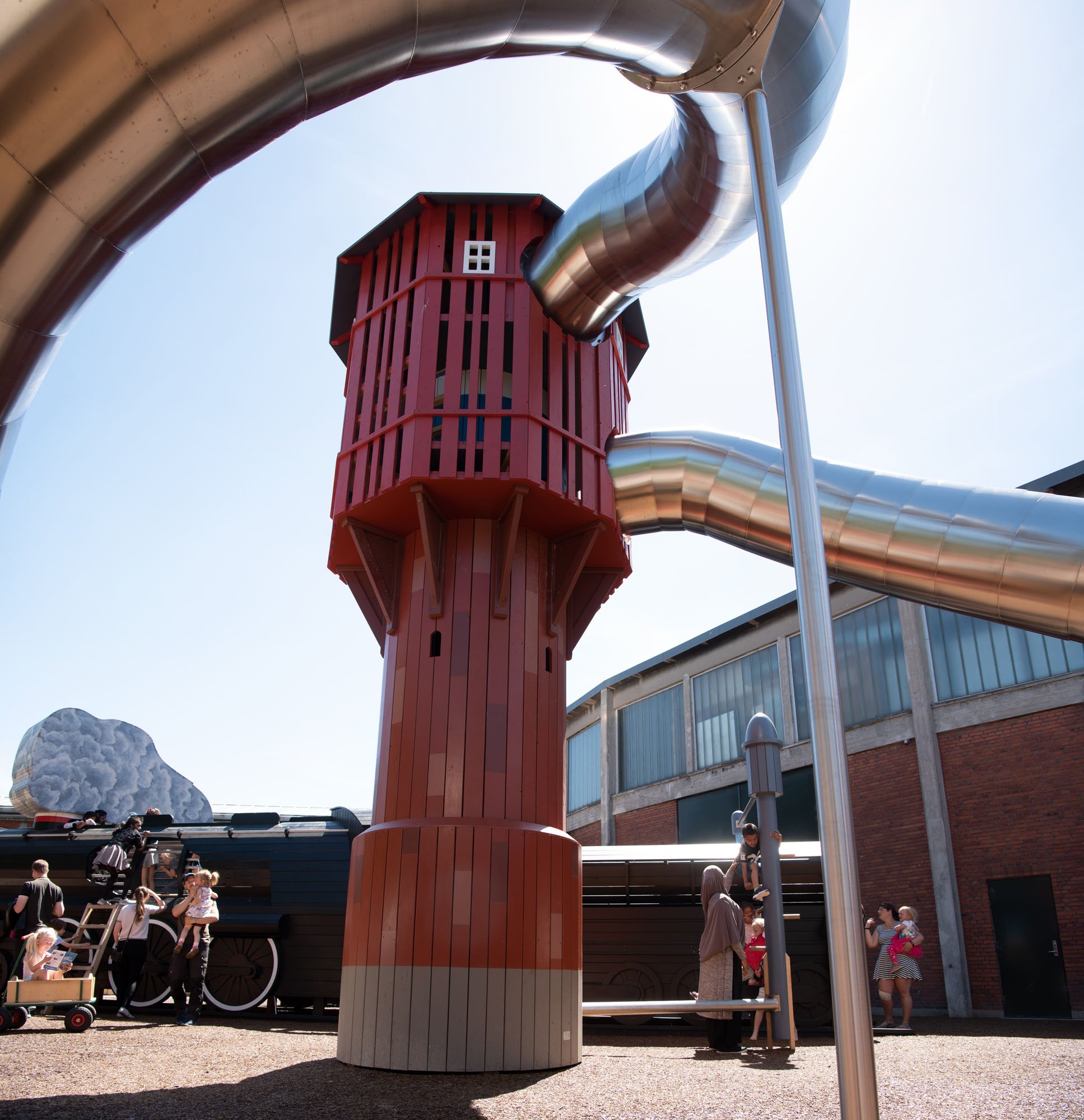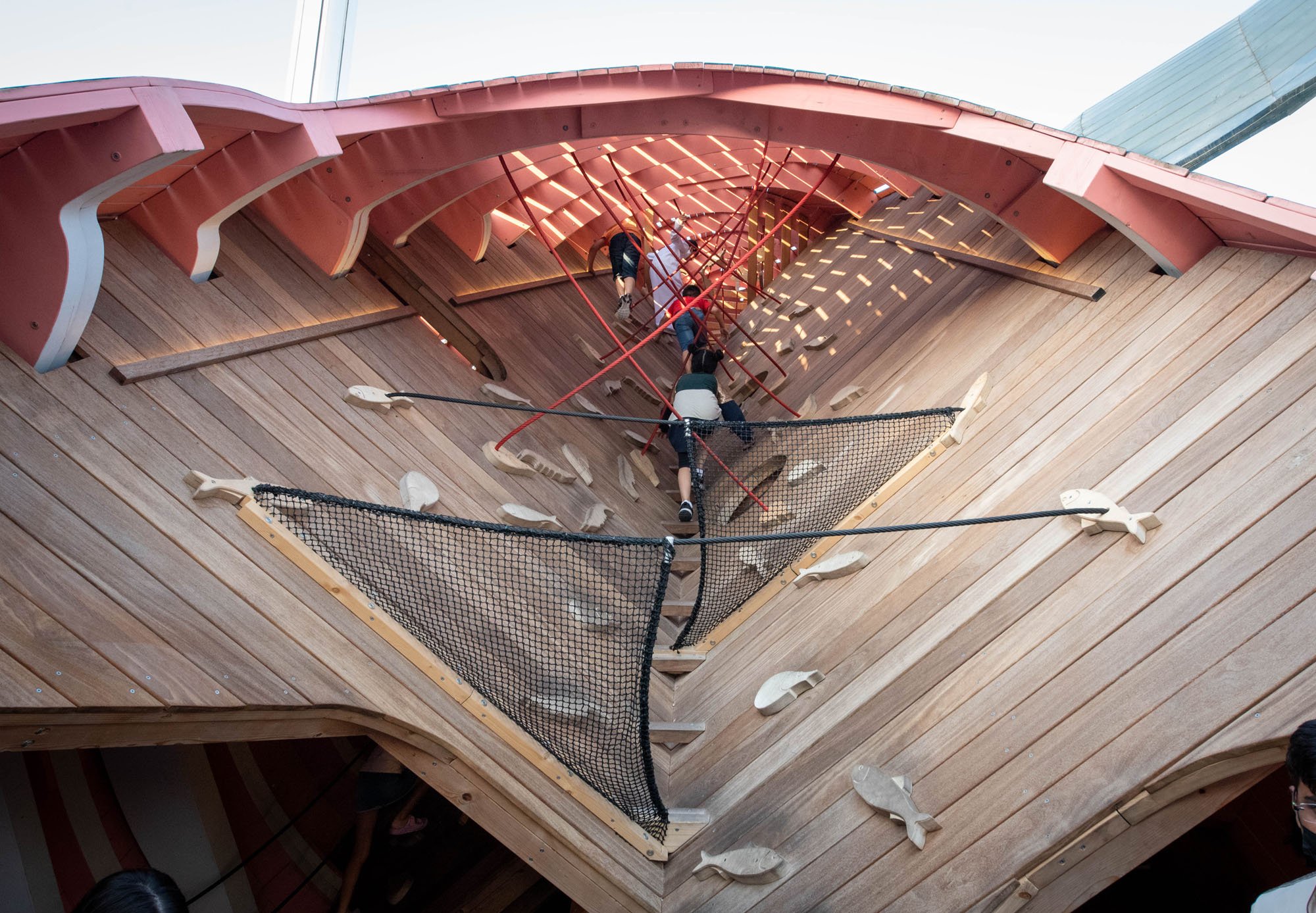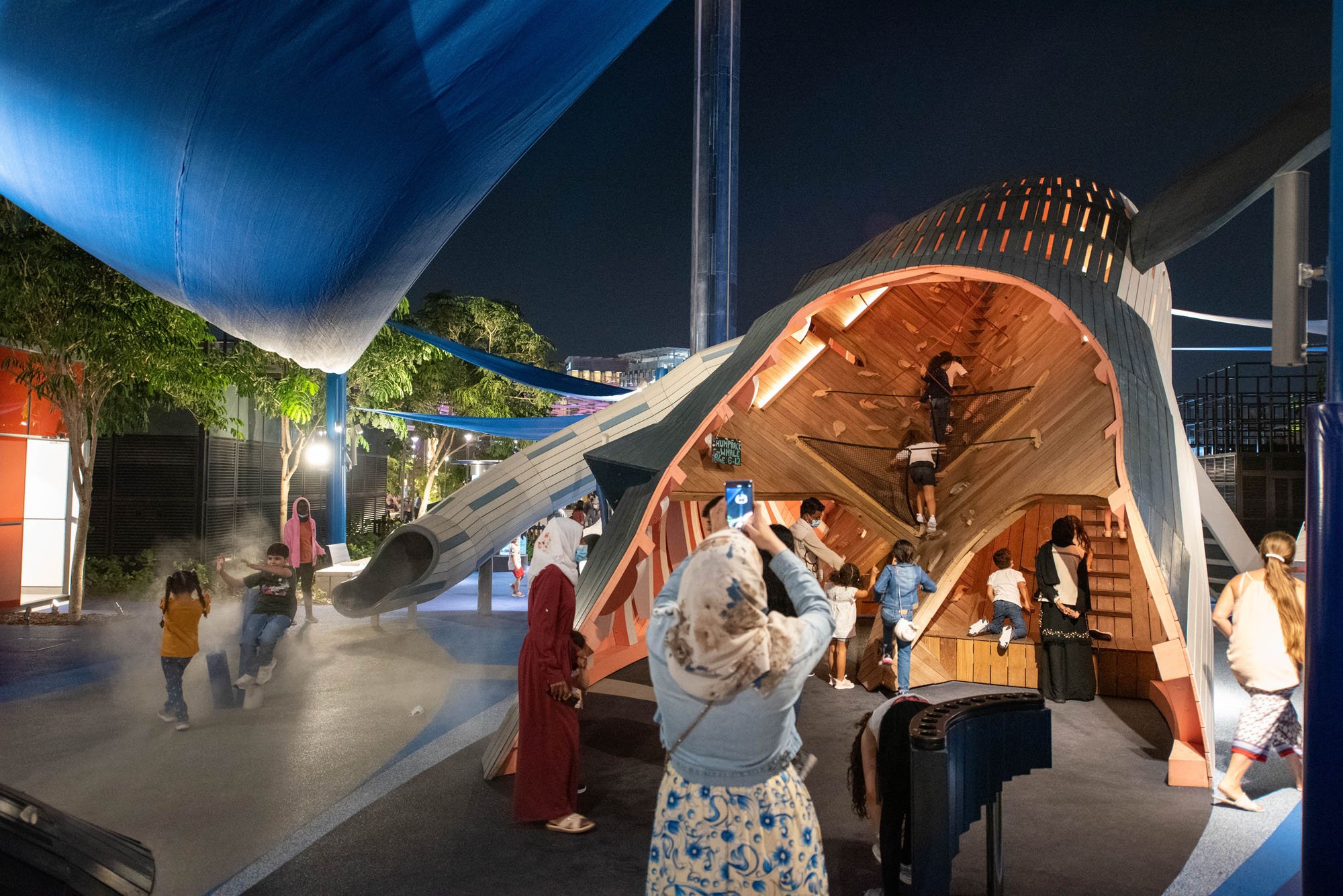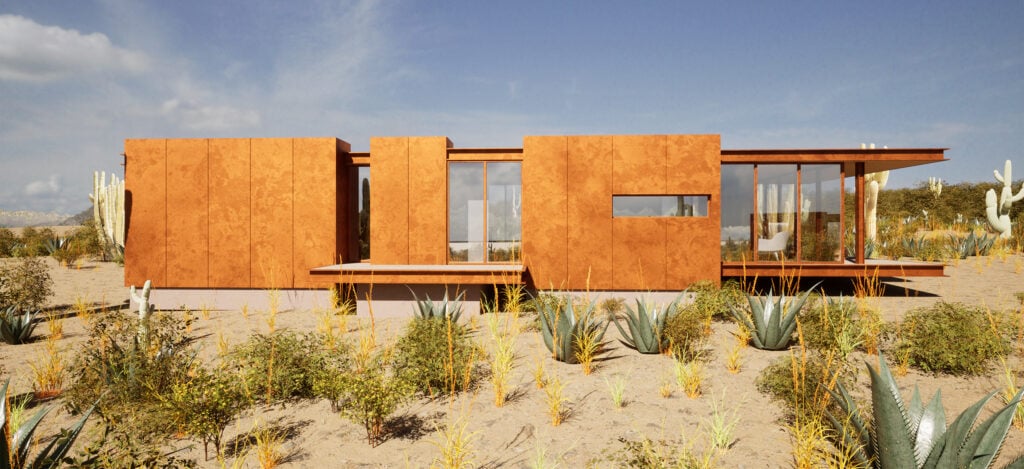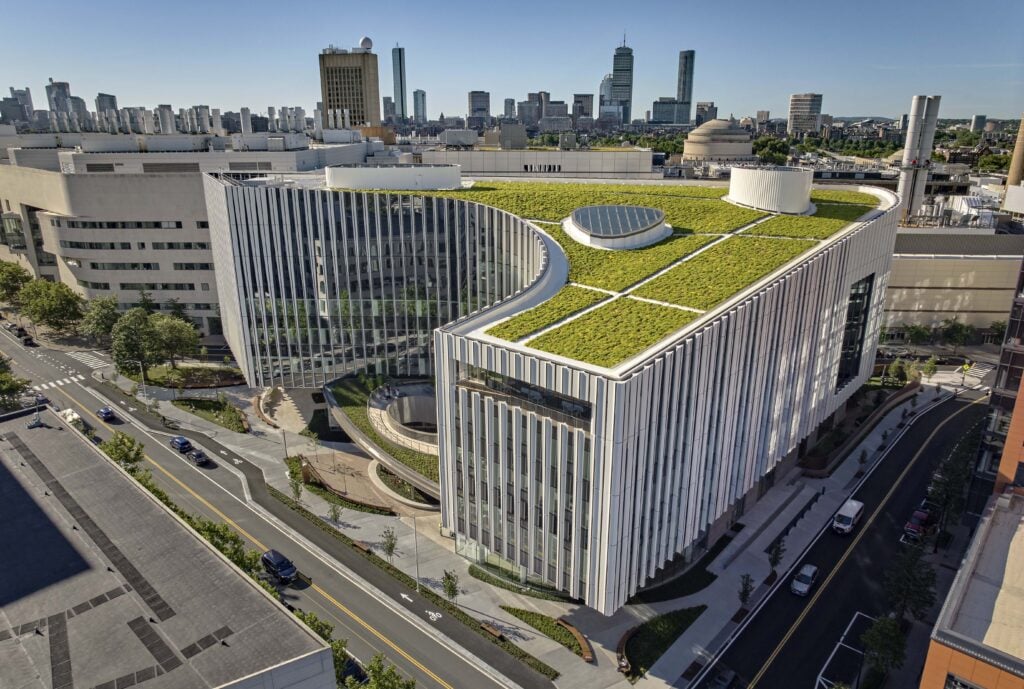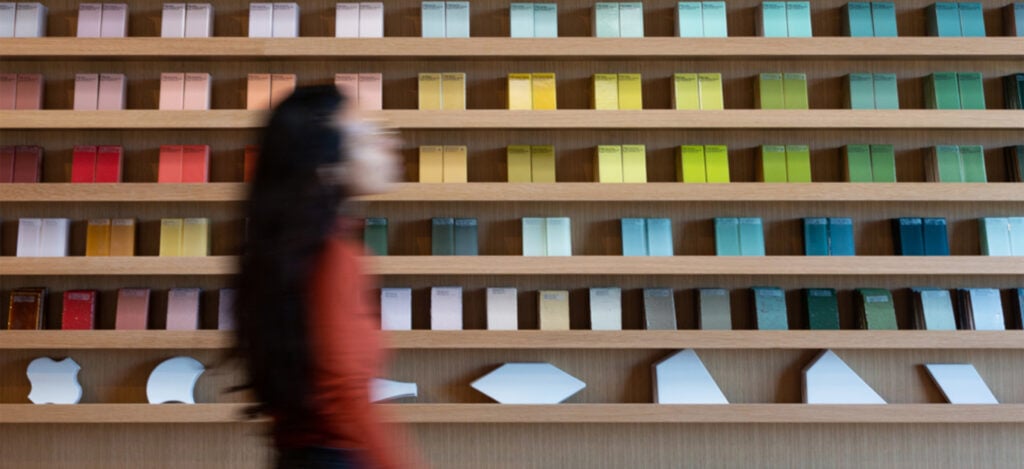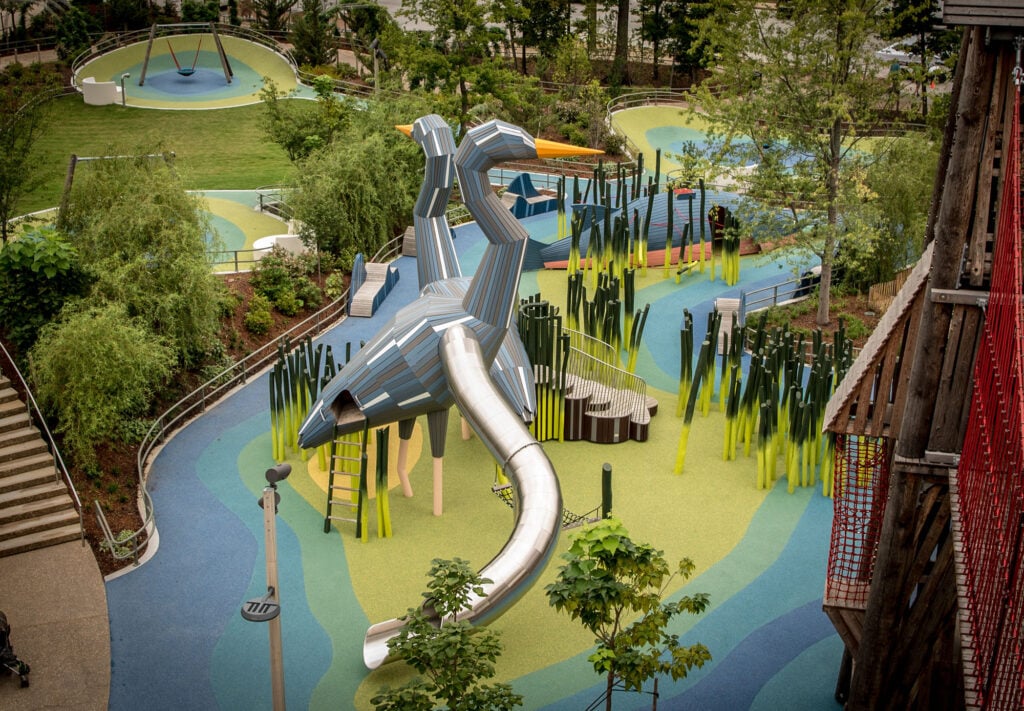
March 9, 2022
Meet the Playground Designers Sparking Children’s Imaginations Around the World
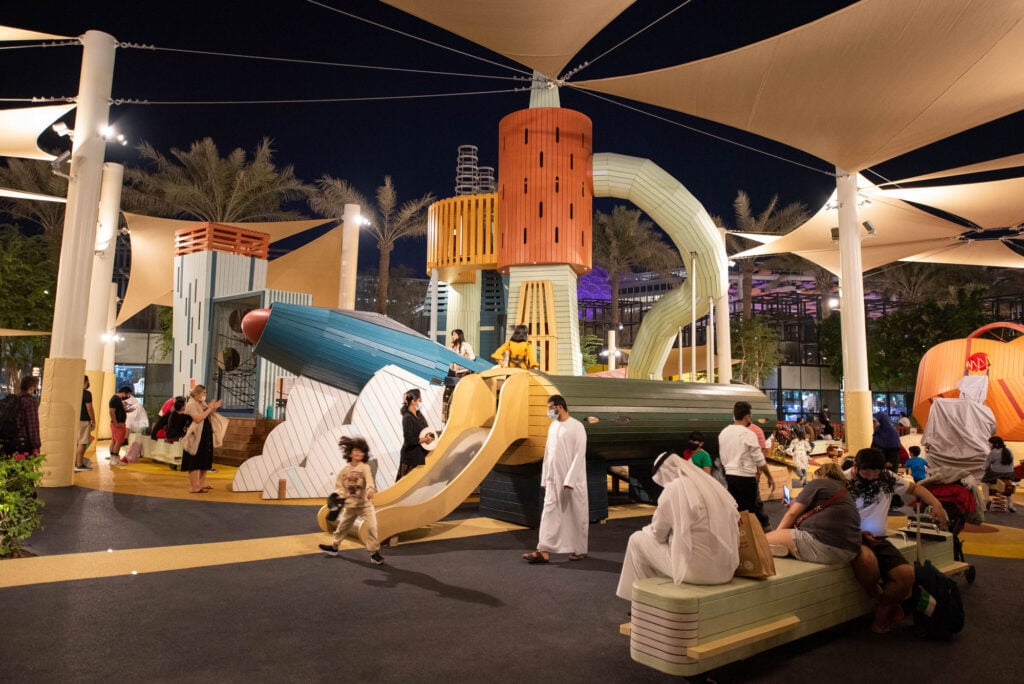
“I think it’s really a lot about how to take chances in life,” Monstrum’s creative director Nielsen says about a playground’s purpose. “That’s what you’re learning when you’re playing freely without supervision.”
For Nielsen and the rest of the Monstrum team, which has grown to over 55 architects, designers and builders, a great playground provides a feast for the eyes, instills a sense of adventure, and creates a gathering place. “We want it to be a place that makes sense on a greater scale,” Nielsen says about his firm’s creations, which more often than not become landmarks in their surroundings. “When you put our playground in a park, it shouldn’t just be equipment. It should make sense for everyday life when you look at it.”
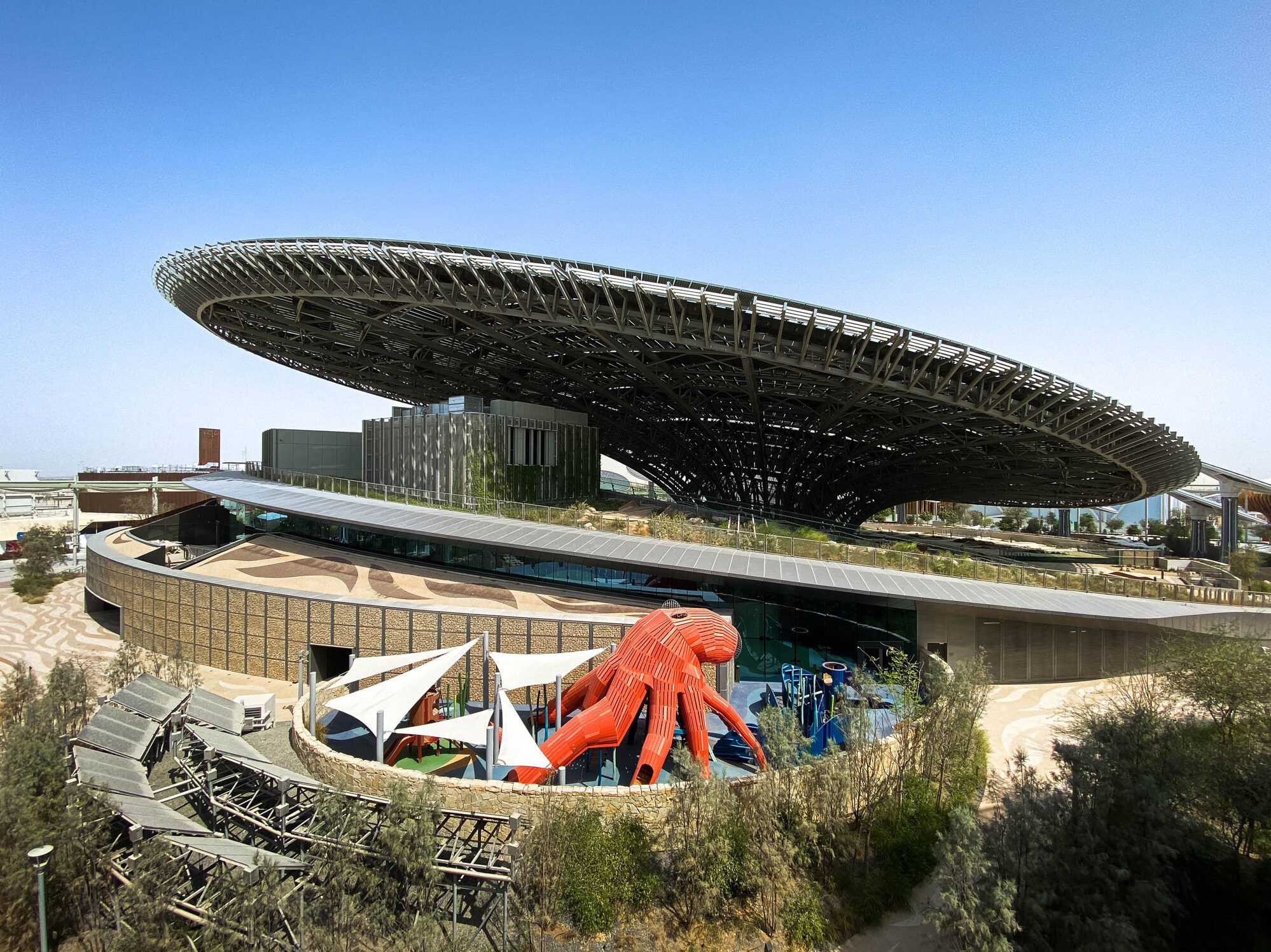
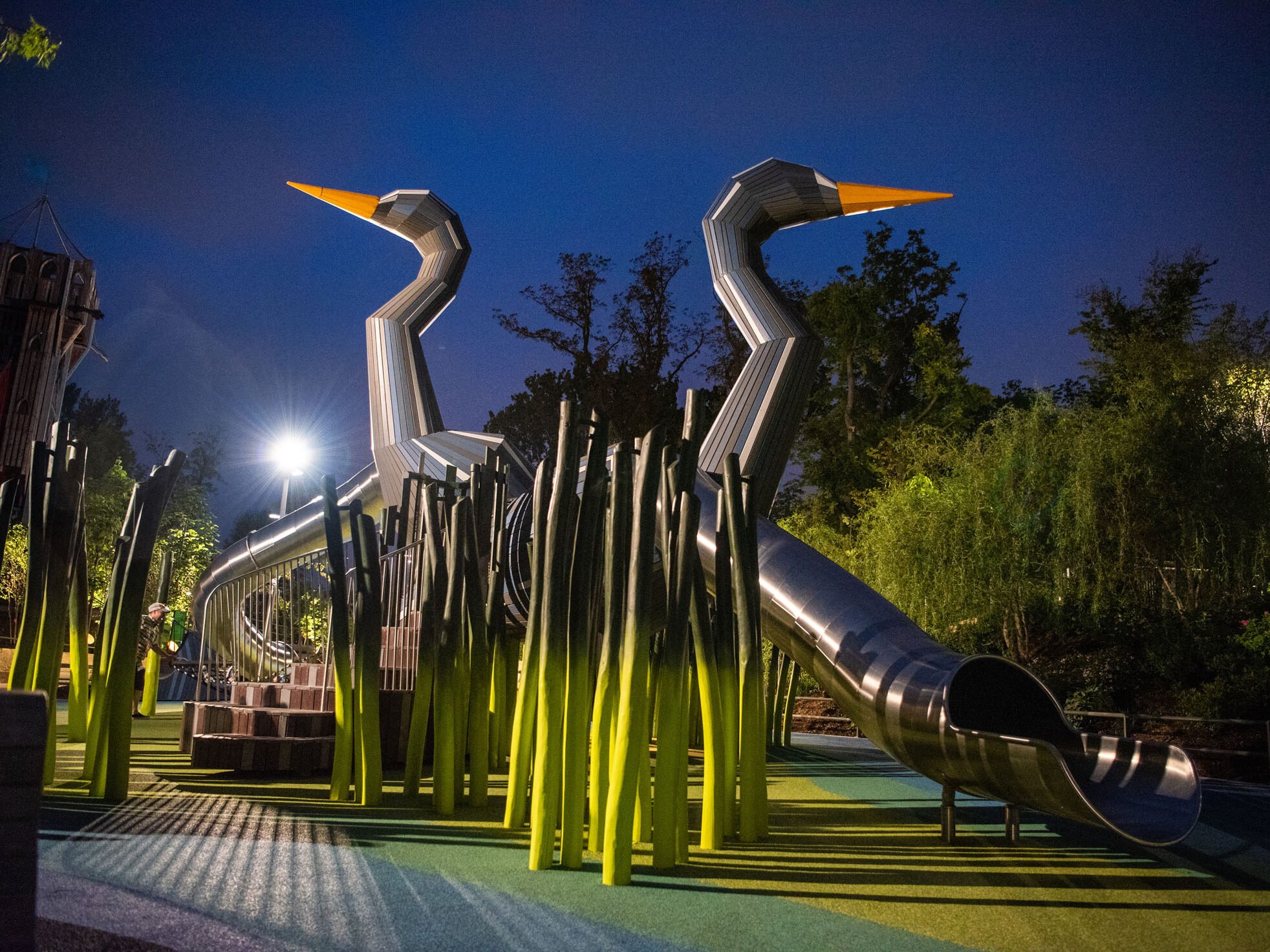
Monstrum’s playground at the Gathering Place, a 66.5-acre park in Tulsa, Oklahoma, perfectly illustrates Nielsen’s philosophy. It features two 23-foot-tall steel herons, a hollow paddlefish and wooden reeds connected with ropes for kids to balance on and climb across. Older children can climb inside the two herons, crawl up to the top, and take the 12-foot slide down. A steel mesh tunnel connects the two birds for a better play flow. The at-grade paddlefish’s mouth serves as an entrance to the playground and climbing grips on its inside suit smaller children, while benches and hammocks invite tired out kids to hang out and have a rest.
Designed, like several Monstrum projects, with landscape architecture firm Michael Van Valkenburgh Associates, the playground is also a place for children and adults to learn about wildlife along the Arkansas River that passes through Tulsa.
Despite its dramatic appearance, the playground is ADA-compliant, and accessible to kids with a wide range of abilities. Nielsen agrees that inclusivity is critical, explaining that while many playgrounds boast wheelchair accessibility, not enough is done for children on the autism spectrum. Those kids often need to have hide away options or places where they can take a mental rest, and these are features that the Tulsa project provides. “We concentrate a lot on how to make children explore,” he says.
Their latest U.S. project, undertaken with Philadelphia and Los Angeles-based landscape architecture firm Olin, will launch in 2023. It’s an ecology-themed playground at New York’s Hudson River Park Pier 26.
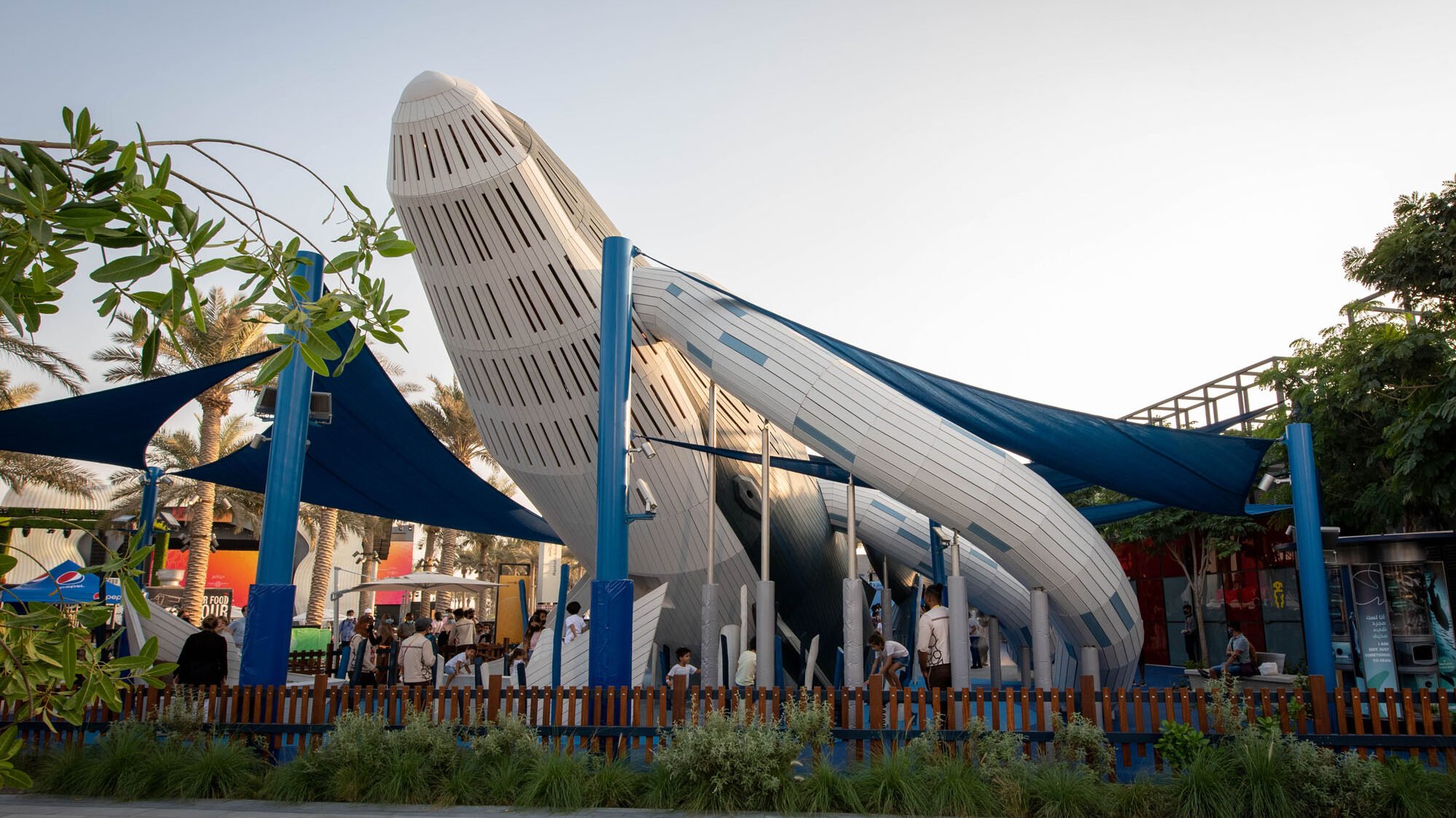
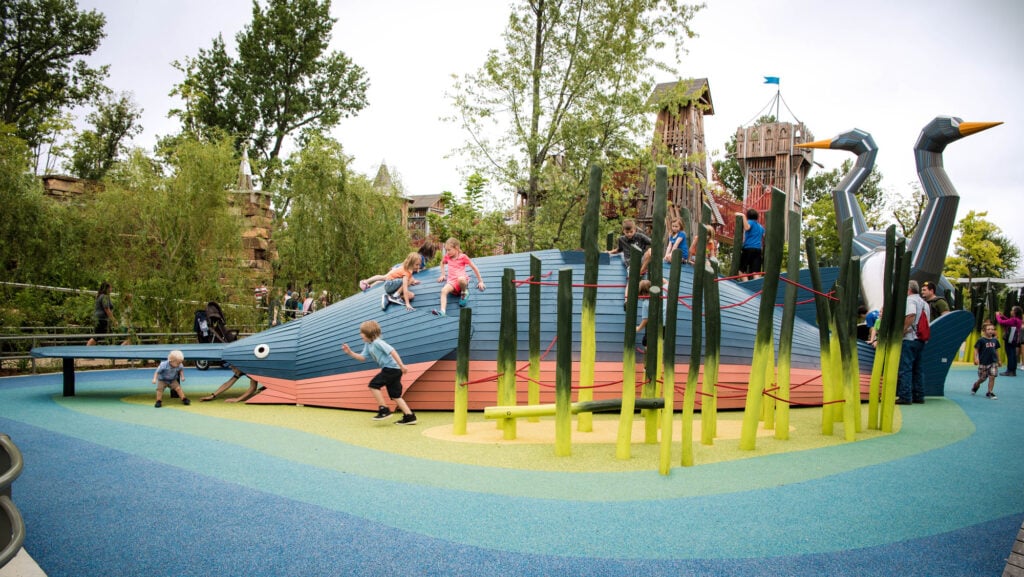
Adding to the playground designers’ growing global recognition, the organizers of Expo 2020, hosted by Dubai in the United Arab Emirates, commissioned the three playgrounds from Monstrum: the Adventurous Octopus, the Humpback Whale, and Future City. The Humpback Whale and the Future City playground are dedicated to the Expo’s mascots—the 9-year-old brother Rashid, an explorer of the environment, art, and history and his 8-year-old sister Latifa, who is a science buff. The Future City structures include an almost 33-foot-tall ultramodern radio tower, a space shuttle ready for take-off, space scooters, and numerous hidden details and educational illustrations.
As the playgrounds in Tulsa and Dubai show, Monstrum mainly works with galvanized or stainless steel and wood such as FSC-certified larch from sustainable forestry operations in Europe. Wooden parts with permanent ground contact are made of Robinia heartwood, which lasts between 25 to 40 years without any chemical treatment or impregnation.
“I like the finish of wood,” says Nielsen. “It feels warm and natural, and it’s a renewable natural resource.” Nielsen’s first playground project—the rocket and the princess tower he designed for his son’s kindergarten—were also made of bent wood. “It’s still my favorite,” Nielsen says.
Would you like to comment on this article? Send your thoughts to: [email protected]
Related
Projects
Study Architects Designs a Water-Saving Desert Retreat in Arizona
The studio’s Tucson home combines Modernist aesthetics with innovative rainwater collection to tackle resource scarcity.
Projects
Payette’s Ragon Building Redefines Biomedical Research Spaces
A collaboration between MIT, Harvard, and Mass General Hospital, the new institute advances vaccine development—including efforts toward an HIV cure.
Products
B Corp Brands Are Creating Design for a Fairer World
The third-party designation is transforming design by putting people on par with profit.



